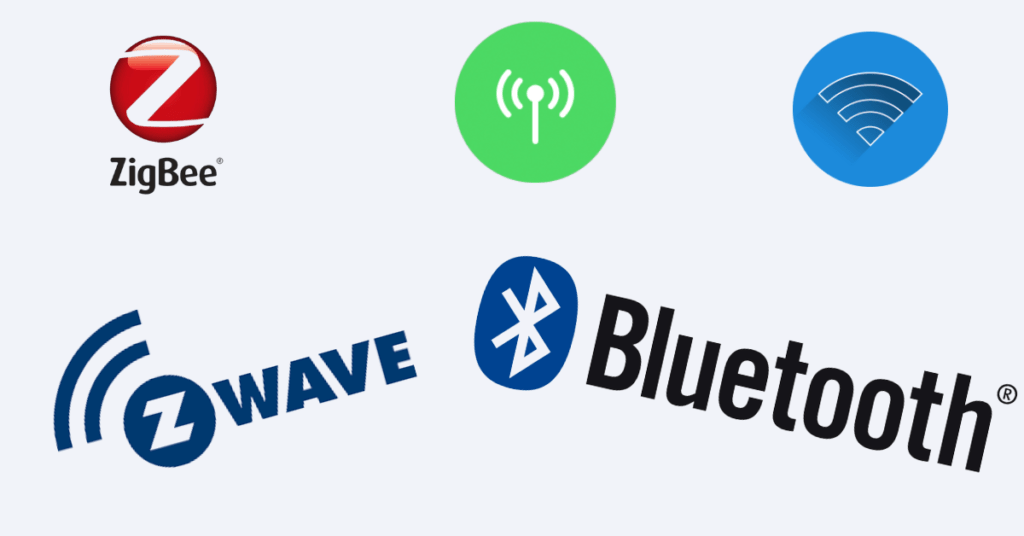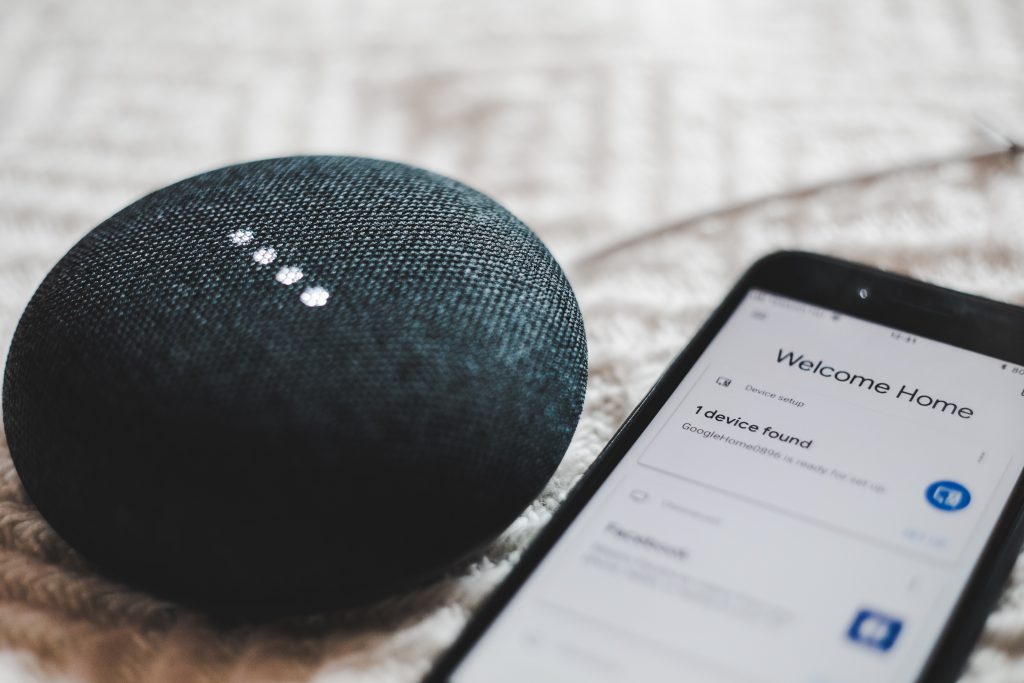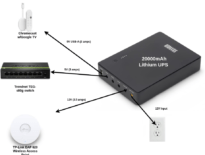
Although the Internet of Things (IoT) has dramatically improved the way we see technology, it has numerous challenges. One particular challenge of the IoT is the interactivity of highly heterogeneous devices, majorly regarding the network protocols and communication capabilities in use. As a result, the interconnectivity model of various devices involves an intermediary device called a gateway. This gateway is a crucial element necessary for controlling devices that comprise an IoT application.
This article will discuss the necessity of a multi-protocol gateway in your home. Let’s get started!
Editor’s Note: This article is written by Bruce Qin, a marketing manager at Dusuniot. He has 5 years of experience in SEO marketing in the IoT industries. He likes to study IoT, especially Smart Home and Raspberry Pi.
This page contains affiliate links. If you purchase an item using an affiliate link I will receive a small commission at no cost to you. Affiliates do not influence my recommendations. Read my disclosures for more information.
Table of Contents
What is a multi-protocol gateway/hub?
Lack of connectivity between devices from different protocols and manufacturers can result in poor user experience. Multiprotocol conversion requires an excellent gateway to figure out Multiprotocol analysis and solve the lack of communication control between terminal devices due to diverse protocols. A multi-protocol gateway can process messages originating from clients in various protocols. Afterward, the service can relay messages to a remote server with multiple protocols. A client’s protocol doesn’t have to be the same as the remote server’s.
Furthermore, a multiprotocol gateway is created to bridge wireless protocols: ZigBee, RF, and Bluetooth on one side and the GSM on another. It will result in the execution of a ” Homogeneous System,” which means that irrespective of the signal coming from any protocol, the multiprotocol gateway will convert it into a GSM protocol.
Common home hubs/gateways on the market
Let’s now see the common home hubs/gateways on the market.
Aeotec
Aoetec supports the ZigBee and Z-wave protocols and also allows the use of network devices. This technology operates as a SmartThings Hub and lets you wirelessly connect various smart devices, enabling them to function hand in hand. You can download the SmartThings Application, select from a variety of Aeotec accessories or many compatible products, and start building the smart home of your design.
Google Home

Google Home (e.g., nest mini) is a voice-activated speaker that operates via Google Assistant. You can use voice commands to obtain answers from Google, handle daily tasks, and enjoy music. Google Home supports Android and iOS operating systems and can control supported smart devices like Nest or Chromecast.
Google Home is not compatible with Zigbee or Z-Wave protocols and so uses it uses Wi-Fi and the cloud to work with smart devices.
Amazon Alexa
The Amazon Echo supports Zigbee versions 1.2 and 3.0 defined by the Zigbee Alliance. It has undergone significant improvement in its Fourth Generation. It not only looks better, but it also sounds better. The built-in speakers produce clear sound with solid bass, automatically suited to fit your room. In addition, the Amazon Echo contains all the convenience of built-in Alexa voice commands.
Xiaomi Mi Smart Home
Xiaomi Mi Smart Home supports Zigbee, Bluetooth Mesh, and Wi-Fi protocols and can be used in parallel for diverse devices, with one hub being sufficient for the stable operation of the whole smart home system.
DIRIGERA
The Dirigera hub supports Wi-Fi, Thread, and Zigbee protocols. Users can connect their Smart devices to the DIRIGERA and control how they operate via the home app, setting triggers for personal devices or grouping them.
Editor’s Note: You may want to check out our list of recommended smart home hubs.
Why do you need a multi-protocol gateway?
Let’s now see the reasons why a multi-protocol gateway is necessary.
Installation of an open source platform
If you want to install some open-source platform that will allow you much more customization, you will need an open-source gateway, and the multiprotocol one will be a perfect choice.
Integration of new devices
Due to the vast array of diverse communication protocols and standards in use by the power system, it can take time to integrate new devices. And because of economic reasons, it won’t be wise to execute support for several protocols on a single intelligent electronic device (IED) because it escalates the requirements for resources and, ultimately, the end price of the product.
It may not be feasible to update the firmware using legacy IEDs. The solution, in this case, is to use a protocol converter: a multiprotocol gateway to translate whatever protocol is compatible with the intelligent electronic device and the rest of the system.
Role in Sustainable Automation
The popularity of smart homes, offices, and factories is on the rise in this modern era. Daily, more sophisticated systems are launched in the market, preferably with remote accessibility. In remote-controlled homes, different types of sensors may be used to keep track of different values, and their accurate data may be accessible via various types of wireless protocols.
However, what if someone wants to use one interface for all devices? For instance, John purchased an RF-accessible temperature sensor, Bluetooth-accessible smoke sensor, and Zigbee-accessible humidity sensor. John needs to integrate these three devices to use one interface for these systems. Here’s where the problem lies, how John can incorporate these devices into a single automated system when all these devices follow their standards. At this point, the Multi-protocol Gateway comes into play: it creates a common standard for all manufacturers.
A single multi-protocol Gateway in a home or office will serve several devices manufactured by diverse manufacturers. Integrating all these devices is just a simple application that consumes the multiprotocol gateway, which provides reliable services to access devices. This approach is how a multi-protocol gateway addresses the problem of integrating multiple vendor-specific devices into a single smart solution.
The multiprotocol gateway’s role isn’t just limited to serving manufacturers: it goes on to home and office users. More importantly, they can track these devices using their mobile phones, even on another continent.
In addition, the multiprotocol gateway mobile interface brings more value by enforcing mobility to this smart monitor solution. It should be worthy of note that the multiprotocol gateway is a connection between the manufacturer and smart Home or office user in the consumer electronics market.
Final thoughts
We hope you’ve understood the importance of having a multi-protocol gateway in your home. If you have any questions or contributions, comment in the section below.
References
- https://www.ibm.com/docs/en/datapower-gateway/10.0.x?topic=development-multi-protocol-gateway#:~:text=A%20Multi%2DProtocol%20Gateway%20can,that%20the%20remote%20server%20uses
- https://www.researchgate.net/publication/301787569_Multiprotocol_Gateway_for_Wireless_Communication_inEmbedded_Systems
- https://arxiv.org/abs/2108.00098
- https://www.dusuniot.com/blog/what-is-an-iot-gateway/
- https://www.enlit-europe.com/exhibitor-press-releases/multi-protocol-gateway-energy-iot-industrial-applications
- https://www.dusuniot.com/blog/best-wireless-protocol-for-your-iot-project/




